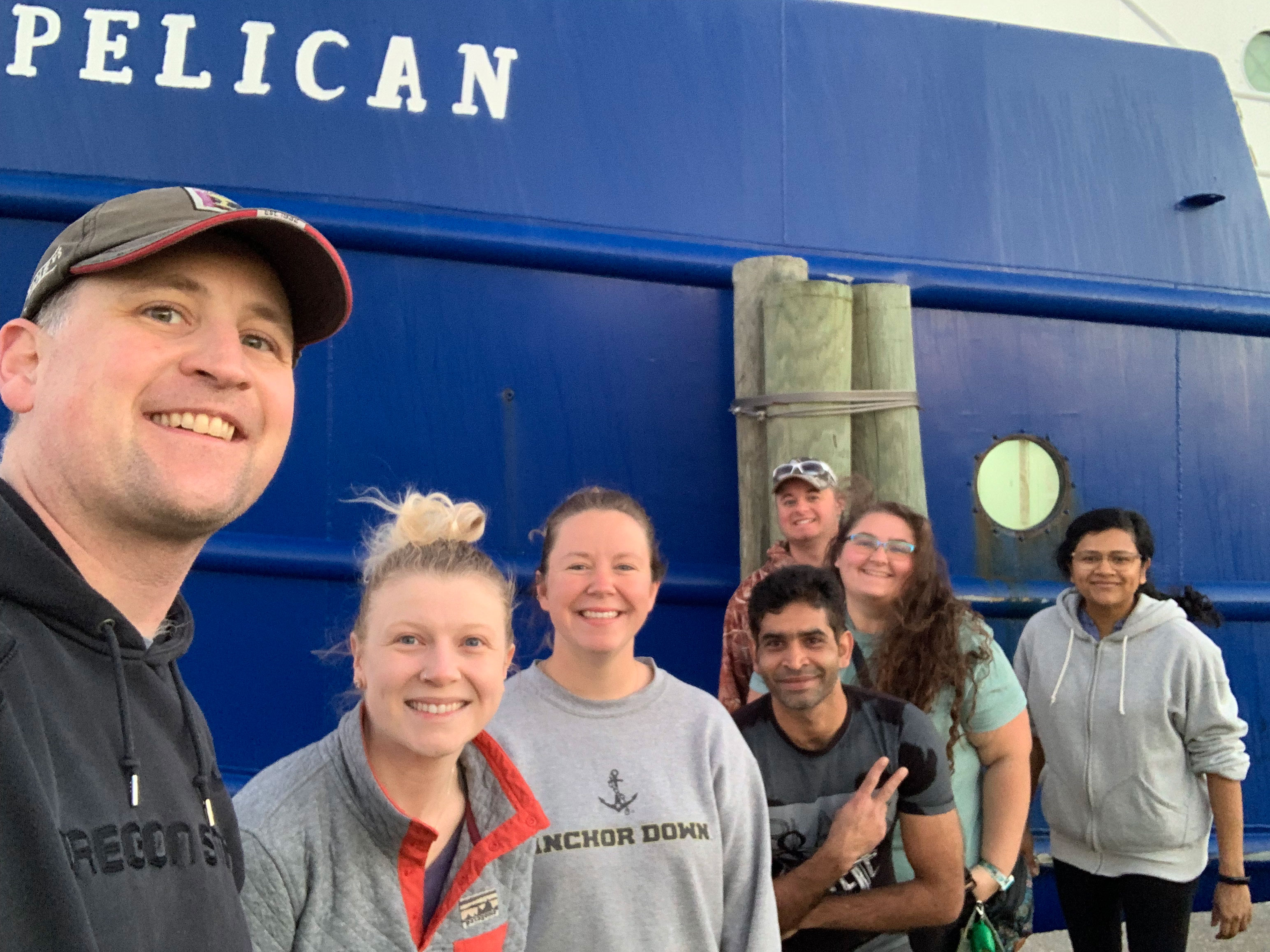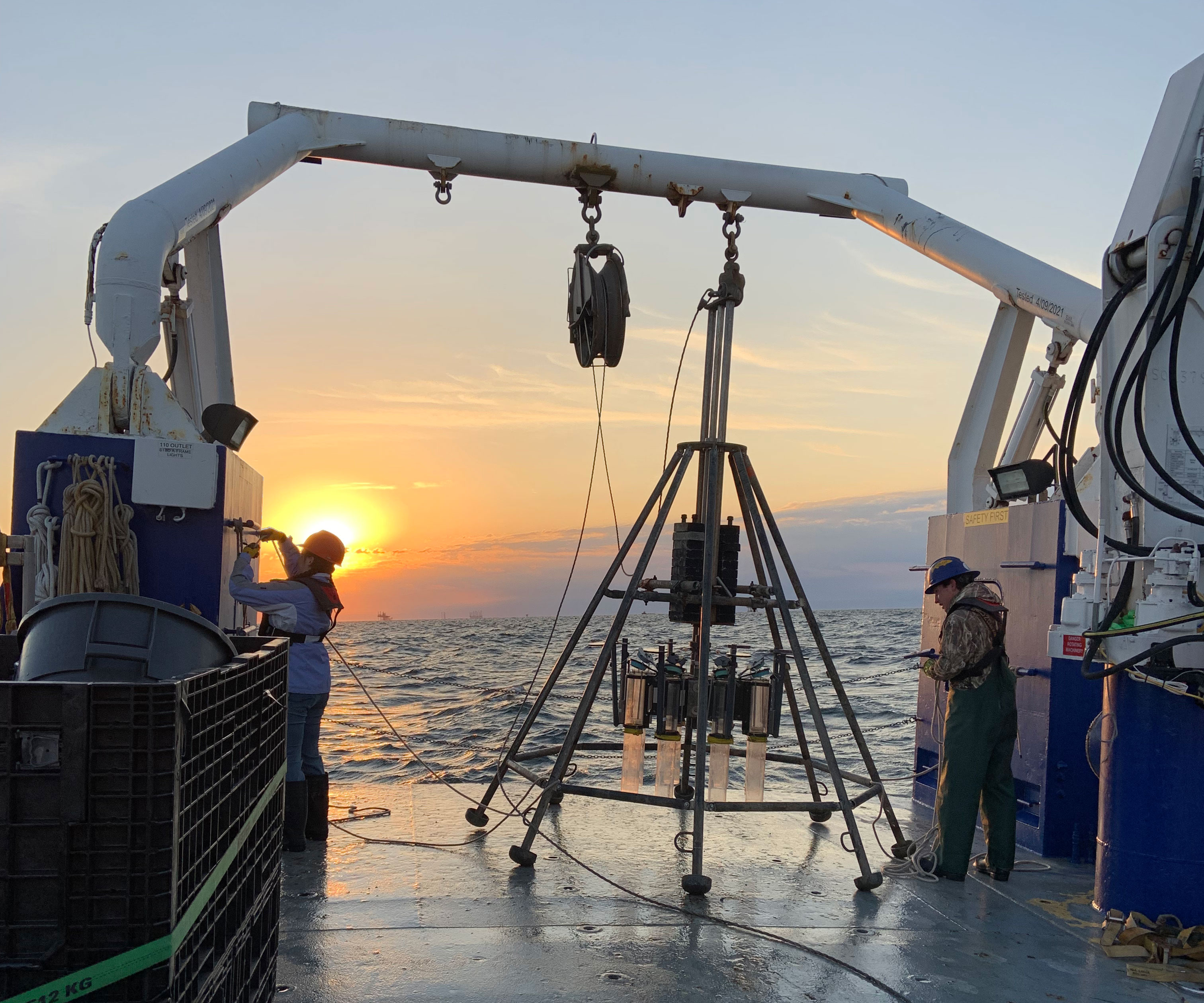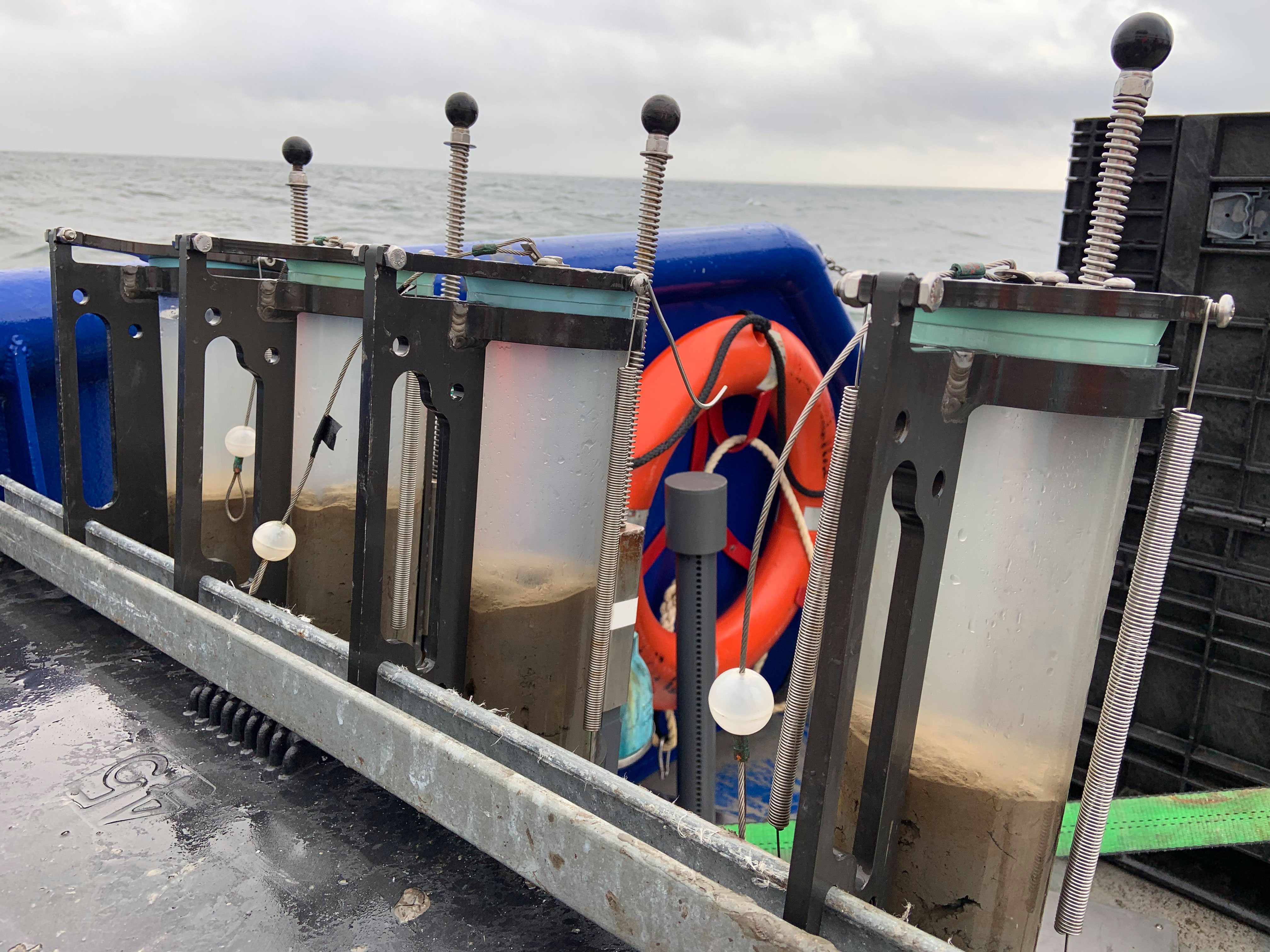(May 10, 2022) --

By Lindsey Lemke
In March 2022, I fulfilled a career goal of participating in a research cruise. Our team of seven, plus the crew, went out for three days into the Gulf of Mexico on the R/V PELICAN, out of LUMCON (Louisiana Universities Marine Consortium), to collect water samples and ocean-floor sediment.
The water samples were collected using 10-liter bottles attached to a metal frame (called a rosette) that were guided by real-time data from a CTD. C stands for conductivity (which helps to determine how salty the water is), T is for temperature, and D is for depth.

You might be wondering how one collects sediment from the bottom of the ocean when it lays 150 feet below the boat? This can be done using a multicorer, a large and heavy cone-shaped instrument that pushes plastic tubes (called cores) into the ocean floor. This is carefully dropped into the sea from the back of the boat onto the seafloor, the tubes push into the sediment then close and lock, and the sediment within the multicorer is safely hoisted back to the surface water and then onto the boat.
From there we sample from different depths within the sediment to learn about processes in the present (surface sediments) and past (deep sediments). Sometimes, we catch critters like worms, crabs, and shrimp. The sediment we collect in this region is often clay-like and feels silky to the touch. Of course, working with sediment is messy and we get covered in mud!

Once we are done collecting samples, we take them into the ship’s laboratory to start some analyses or store the sediment. Some analyses can be done at sea, which is challenging with the boat (and everything in it) rolling in the waves, but this helps us get data quickly and reduces the work needed when we get back to our lab at Dauphin Island Sea Lab.
Days at sea become busy and long, so it is important to find time for rest and fun. We play card games and tell stories. Overall, we successfully sampled many different sites, collecting a lot of data (most of which will take months to analyze), all while making new friends.
We are excited for the next cruise which will help us learn more about the Gulf of Mexico!